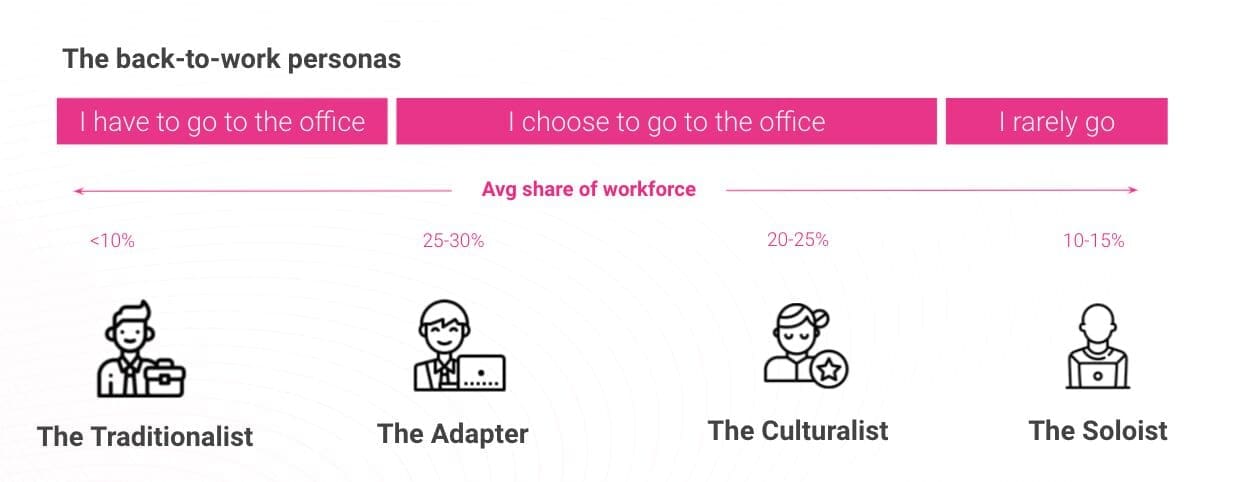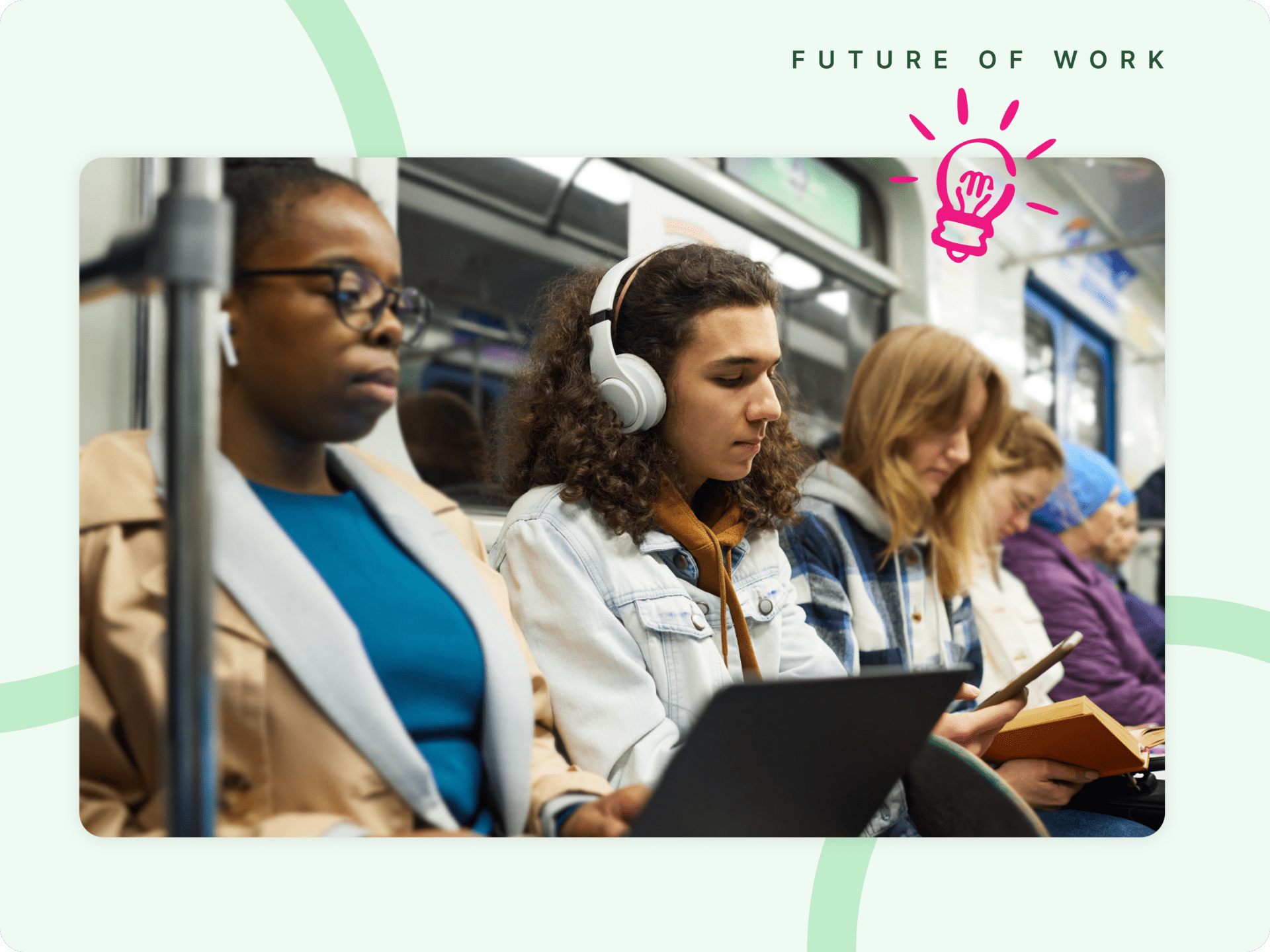Hybrid Persona #1: The Soloist
In a new mini-series of blogs, we take a light-hearted look at different types of employees, their personas and how the transition to hybrid might affect them, and more importantly what you can do to keep them happy.
First up, one of the key remote working employee personas: it’s the Soloist. Most famous example: Albert Einstein.
The Soloist is an independent creature, a lone worker happiest working from their garden office in sweatpants; mandatory remote working has been a paradise for them. No commute, flexibility and the freedom to pop into the kitchen every few hours to mix their sourdough starter. They like to get their head down away from the distractions and noise of the office. They’re typically older and more established at the company – unlike their more junior colleagues, they don’t feel the need to network and nurture relationships.
Einstein, perhaps the world’s most decorated Soloist, famously wore the same outfit every day so that he didn’t waste precious brainpower on deciding what to wear. For the Soloist, dressing up for the office is an unnecessary extravagance.
Soloists are typically highly productive. They’re happiest in a hands-off culture that allows them to dictate their own working patterns. They thrive when they’re judged on the quality of their output rather than time spent at their desk. Autonomy and choice are important to them. The challenge for organizations is ensuring that the Soloist remains engaged with company culture and doesn’t become isolated. Particularly over the medium to long term, as culture evolves and employees come and go, the Soloist may find themselves losing touch with the workplace community.
Here are ten tips to help you keep your Soloists feeling happy, engaged and valued in a hybrid workplace culture.
1. Keep your lone worker connected with workplace technology
Communication and project management platforms such as Slack and Asana help keep communication lines open no matter where employees are based. Easier for quick-fire conversations than email, they’re the virtual equivalent of informal office chats. You can use them for both work and play too. Social Slack channels help recreate those watercooler moments, facilitate connection and encourage Soloists out of their home office silos. Insist that all employees use your chosen platforms even if they spend time in the office, so you don’t leave anybody out of updates and conversations.
2. Practice hybrid meeting equality
Team members who attend meetings in person will typically benefit from a richer experience, picking up on the social cues and non-verbal communication so important to human interaction.
The Soloist, staring at a laptop screen, will potentially miss out. Try to mitigate against this by making an extra effort to ensure that these lone workers feel included and valued in your meetings, whether in-person or remote. Our hybrid meetings article is full of tips, including making time for small talk at the beginning, giving everybody a chance to contribute on each point and implementing tech that creates an immersive meeting experience for remote attendees. Acknowledge screen fatigue too, and only schedule meetings when necessary.
3. Keep lone workers in the loop
The Soloist can get FOMO too. Nobody likes the feeling that they’re the last to hear big news. It’s important to make sure they’re kept in the loop of any changes at work. Make any big announcements over a virtual call so that everyone gets to hear them at the same time and through the same medium. Make sure that remote employees have the same opportunity to respond and feedback as everybody else.
4. Show them you care
If you have a Soloist in your team, there’s a risk that conversations with them become purely mechanical – project updates, task setting or performance reviews. Those serendipitous encounters in the corridor or after work drinks when you chat about personal things – holidays, your families, or the Super Bowl – don’t happen.
Be sure to make room for personal connection in your interactions with Soloists. Show an interest in their private lives. Get to know what’s going on for them. If conversations easily get bogged down in work topics, why not schedule a fortnightly check-in call with day-to-day work strictly off the agenda?
5. Celebrate their contributions
Feeling undervalued can lead to resentment. At home for most of the time, the Soloist isn’t around to get that pat on the back or appreciative nod during a meeting. Left unchecked, they can start to feel underappreciated. Celebrating contributions can be as simple as publicly saying thank you for a piece of work or achievement during a team call, or making a point of acknowledging individual contributions when sharing a project update.
6. Offer flexible working
One of the biggest benefits the Soloist enjoys is the flexibility to fit work around life. Provided they’re performing, afford them the autonomy to choose when they work and embrace asynchronous communication. We all have times of the day when we’re more productive, and it’s not always between nine and five.
7. Be clear on in-person meeting cadence
If you require staff to come into the office for face-to-face meetings, be clear on what you expect. Short-notice requests to come in might be a problem for Soloists, so communicate dates and times clearly and in good time – finding a routine with a regular cadence will work best.
8. Bring the office to them
Companies such as Fujitsu are setting up hub and spoke models, with a slimmed down HQ and satellite offices in urban areas or close to train stations. These satellites give workers an easy option when they need or want to meet in-person. They break down one of the barriers Soloists may have to coming in – difficulty getting to the office.
9. Seamless in-office experience
Creating a great in-office experience will make your Soloists’ trips into the office as pain-free as possible. One of the biggest sources of anxiety for remote workers coming into the office is hot desk anxiety. You can eliminate this by enabling your employees to book a desk in advance, either as a one-off or on a regular cadence.
They’ll get peace of mind that there’s a clean desk waiting for them in a location they know they can work in. Desk scheduling software systems such as Kadence also give organizations a wealth of usage data, so you can design workplaces using data-driven usage insights.
10. Ensure equipment parity
From a lumbar support chair to an ergonomic keyboard, providing Soloists with a good level of equipment for their home office will help them feel valued, and support their wellbeing. In a remote-first culture, many companies will be moving to a desk hoteling system and repurposing office space for collaboration and meeting space. If you’re in that boat, why not offer surplus desk equipment to home workers so they can upgrade their spare room or garden shed for work?
The Soloist employee persona – made for the remote-first hybrid workplace

After decades of a one-size-fits-all approach, the workplace as we know it is in flux. There’s no doubt those who prefer lone working are well suited to this hybrid workplace revolution. If they’ve struggled with coming into the office on a fixed routine in the past, the sudden new-found freedom will have been a breath of fresh air.
So don’t try to force your Soloists back to the office unnecessarily. Instead, embrace their independence and put in place a hybrid working model and remote working tools and strategies to keep them connected and engaged from afar.



